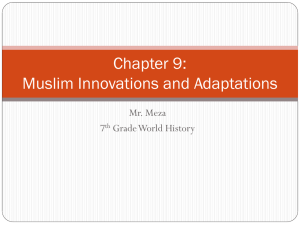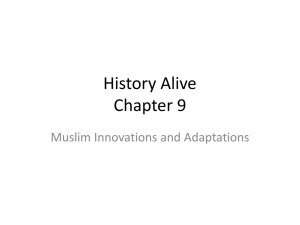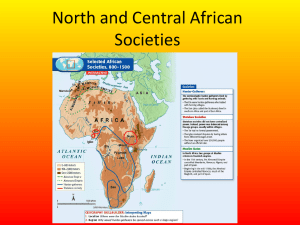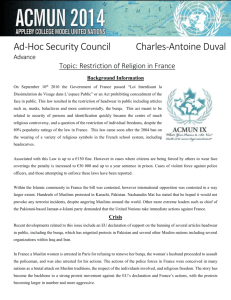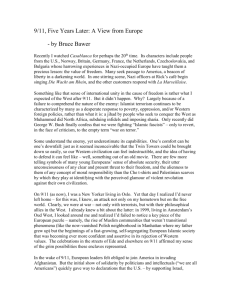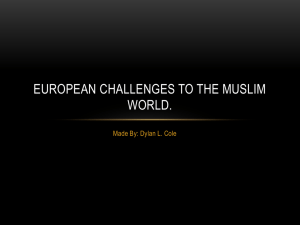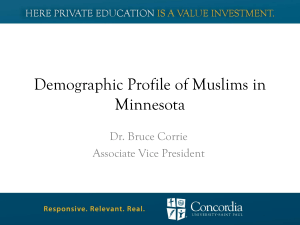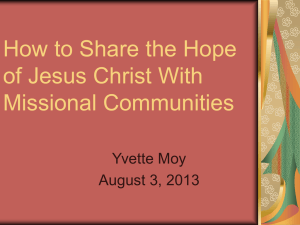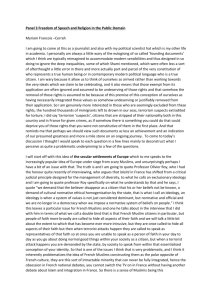Muslim Civilization`s Golden Age
advertisement
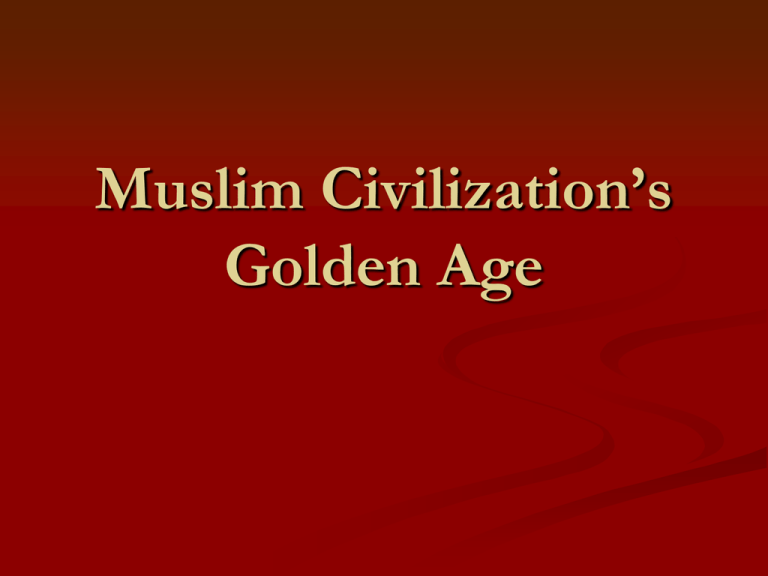
Muslim Civilization’s Golden Age Social and Economic Advances Muslim leaders unite many diverse cultures Egyptians Europeans Arabs Persians Turks Africans Mongols Indians Southeast Asians International Trade Network built by the Muslims Merchants were honored in the Muslim culture They were seen as “God’s trusted servants on Earth.” Camel caravans crossed the Sahara. African, Muslim, Jewish and Christian traders traveled the Silk Road to China Trade Spread products, technology, knowledge and culture. Arabic numerals became well known and helped the global exchange grow and thrive. New Business Practices for Muslims Created partnerships Bought and sold on credit Formed banks for exchange of currency Invented bank checks New system of accounting Highly valued manufactured goods Manufacturing organized by guilds Regulated prices, methods of production and the quality of the product. Produced steel swords from Damascus leather goods from Cordoba cotton textiles from Egypt carpets from Persia Agriculture thrives Muslim leaders extended agricultural land. Because of scarcity of water they had large irrigation systems. Grew crops for food, made medicinal herbs and grew flowers to sell. Social structure of the Muslims Muslims had social mobility Could move up in social rank by having religious, scholarly and military achievements. Muslims did not enslave other Muslims, but they would put people in slavery from conquered lands. Slaves were mostly used as household servants. Muslim Art, Literature and Architecture A blending of traditions of the many people under Muslim rule Literature The greatest work of Islamic literature is the Quran. The Quran banned the worship of idols so artists were not allowed to portray God/human figures in religious art. Poetry Poems encouraged the faithful to worship God selflessly without hope of reward. Persian Muslim writers Firdawsi- wrote Book of Kings which tells the history of Persia. Omar Khayyam- Muslim scholar, astronomer and writer. Later stories were about Aladdin and his Magic Lamp and Ali Baba and the Forty Thieves. Religious Buildings Mosques and minarets dominated Muslim cities Dome of the Rock in Jerusalem (688 AD) decorated with elaborate patterns. Calligraphy is perfected- art of beautiful handwriting. Muslims seek knowledge Boys and girls receive elementary education which emphasized reading and writing Needed so everyone could read the Quran. Center of learning Baghdad is the greatest Muslim center of learning. Advances in philosophy, math and medicine. They also translated older texts into Arabic. Philosopher- Ibn Rushd Put all knowledge, except the Quran, to the test of reason. His writings were translated into Latin and would influence Christian scholars. Arab thinker- Ibn Khaldun Set standards for the scientific study of history He stressed that economics and social structure were the causes of historical events. Warned historians to watch for bias and exaggeration. Math Al-Khwarizmipioneered algebra The original Mr. K!! Medicine Physicians and pharmacists had to pass tests to practice. Governments set up hospitals. Physicians traveled to the sick and visited jails. Muhammad al-Razi Head physician at Baghdad’s hospital. Researched measles and smallpox. Wanted doctors to “treat the mind as well as the body.” Persian physician- Ibn Sina Wrote an encyclopedia of what the Greeks, Arabs and himself had learned about diagnosing and treating diseases. Book includes many prescriptions.

